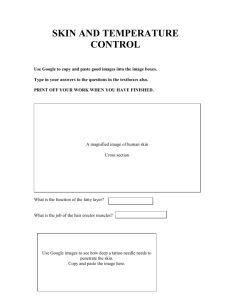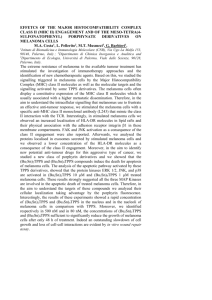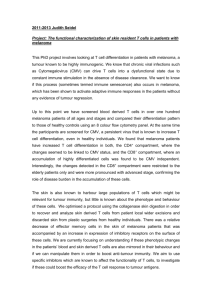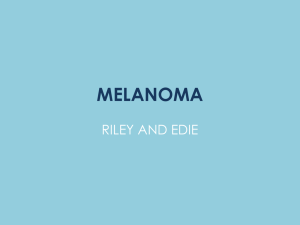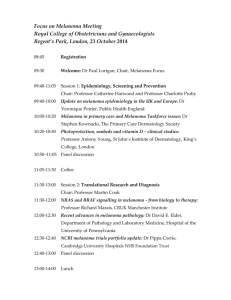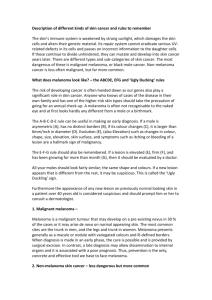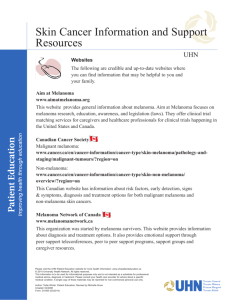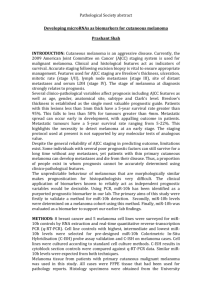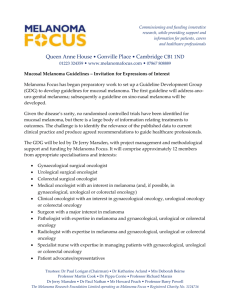Click here for an example
advertisement
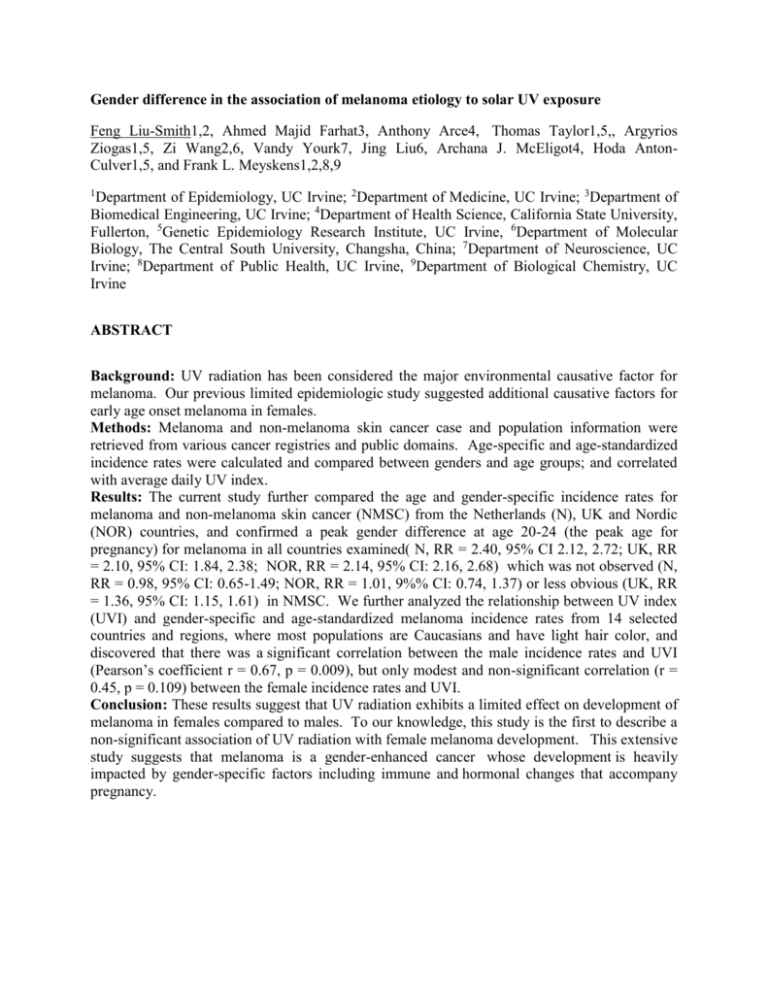
Gender difference in the association of melanoma etiology to solar UV exposure Feng Liu-Smith1,2, Ahmed Majid Farhat3, Anthony Arce4, Thomas Taylor1,5,, Argyrios Ziogas1,5, Zi Wang2,6, Vandy Yourk7, Jing Liu6, Archana J. McEligot4, Hoda AntonCulver1,5, and Frank L. Meyskens1,2,8,9 1 Department of Epidemiology, UC Irvine; 2Department of Medicine, UC Irvine; 3Department of Biomedical Engineering, UC Irvine; 4Department of Health Science, California State University, Fullerton, 5Genetic Epidemiology Research Institute, UC Irvine, 6Department of Molecular Biology, The Central South University, Changsha, China; 7Department of Neuroscience, UC Irvine; 8Department of Public Health, UC Irvine, 9Department of Biological Chemistry, UC Irvine ABSTRACT Background: UV radiation has been considered the major environmental causative factor for melanoma. Our previous limited epidemiologic study suggested additional causative factors for early age onset melanoma in females. Methods: Melanoma and non-melanoma skin cancer case and population information were retrieved from various cancer registries and public domains. Age-specific and age-standardized incidence rates were calculated and compared between genders and age groups; and correlated with average daily UV index. Results: The current study further compared the age and gender-specific incidence rates for melanoma and non-melanoma skin cancer (NMSC) from the Netherlands (N), UK and Nordic (NOR) countries, and confirmed a peak gender difference at age 20-24 (the peak age for pregnancy) for melanoma in all countries examined( N, RR = 2.40, 95% CI 2.12, 2.72; UK, RR = 2.10, 95% CI: 1.84, 2.38; NOR, RR = 2.14, 95% CI: 2.16, 2.68) which was not observed (N, RR = 0.98, 95% CI: 0.65-1.49; NOR, RR = 1.01, 9%% CI: 0.74, 1.37) or less obvious (UK, RR = 1.36, 95% CI: 1.15, 1.61) in NMSC. We further analyzed the relationship between UV index (UVI) and gender-specific and age-standardized melanoma incidence rates from 14 selected countries and regions, where most populations are Caucasians and have light hair color, and discovered that there was a significant correlation between the male incidence rates and UVI (Pearson’s coefficient r = 0.67, p = 0.009), but only modest and non-significant correlation (r = 0.45, p = 0.109) between the female incidence rates and UVI. Conclusion: These results suggest that UV radiation exhibits a limited effect on development of melanoma in females compared to males. To our knowledge, this study is the first to describe a non-significant association of UV radiation with female melanoma development. This extensive study suggests that melanoma is a gender-enhanced cancer whose development is heavily impacted by gender-specific factors including immune and hormonal changes that accompany pregnancy.



